History
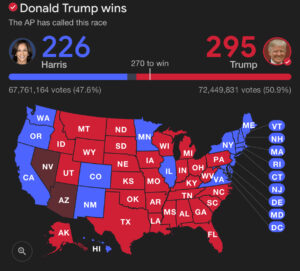 Yesterday, Americans went to the polls to elect our next president. We do this every four years, and whether your candidate wins or loses, it is a right that belongs to every US citizen over the age of 18 years. It isn’t a right that should be taken lightly. There are nations who do not have this right…and unfortunately, there are people who don’t vote and therefore forfeit their right. I understand that many people thing that their vote doesn’t matter, but every vote matters…every vote counts. I don’t care if you live in a state that is so completely red or so completely blue that you don’t think that your vote could possibly make a difference, it can. Change often happens slowly, but when enough people see a need for change, and they vote, change eventually happens. Take for example the states that flipped from Democrat to Republican in this election. People wanted change, and they went out to vote so they could get it.
Yesterday, Americans went to the polls to elect our next president. We do this every four years, and whether your candidate wins or loses, it is a right that belongs to every US citizen over the age of 18 years. It isn’t a right that should be taken lightly. There are nations who do not have this right…and unfortunately, there are people who don’t vote and therefore forfeit their right. I understand that many people thing that their vote doesn’t matter, but every vote matters…every vote counts. I don’t care if you live in a state that is so completely red or so completely blue that you don’t think that your vote could possibly make a difference, it can. Change often happens slowly, but when enough people see a need for change, and they vote, change eventually happens. Take for example the states that flipped from Democrat to Republican in this election. People wanted change, and they went out to vote so they could get it.
Of course, sometimes things have to get so bad that if makes people go out to vote. That can be the hardest part, because things do have to get pretty bad. Nevertheless, the people living in this era were born “for such a time as this.” We may not know it, but it is the truth. Each of us has face the times we are in, and we have decided whether we like what is going on or not. Then we act…but only if we get out and vote. Being angry, frustrated, or just done with it, will not create change. Only voting can do that…well, voting and much prayer. I’m sure you can tell which side of the coin I fall on, and that’s ok. I may be for one side or the other, but I firmly believe that people from both sides have a say, and a right to choose. 
Of course, along with the right to vote, comes the right not to vote, and that too, is your right, but in my opinion, that is not the best way to go. My candidate may or may not win, as president, or any other office, but by voting, I have had my say in the matter. Sometimes, a win that is completely unexpected happens, because the voters turn out. You have tremendous power. That vote carries weight. It says, “I am making a stand!! This is how I see things…like it or not!! It’s my vote…and mine alone!! No one can make me vote one way or the other…or at all, but if I don’t vote, my voice is silenced.”
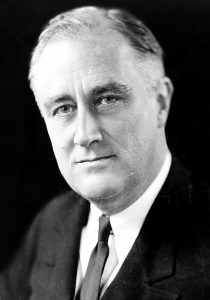
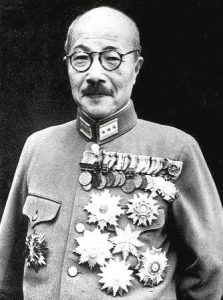 As with any attack, planning must be done before any action can take place. The attack on Pearl Harbor was no exception. A little more than a month, on November 5, 1941, the Combined Japanese Fleet received Top-Secret Order Number 1, stating that in just over a month, Pearl Harbor, along with Malaya (now Malaysia), the Dutch East Indies, and the Philippines, was to be bombed. There was much preparation to do, and very little time to do it. Failure would not be an option, because failure would mean death, and in fact, the battle was a planned death for the kamikaze pilots.
As with any attack, planning must be done before any action can take place. The attack on Pearl Harbor was no exception. A little more than a month, on November 5, 1941, the Combined Japanese Fleet received Top-Secret Order Number 1, stating that in just over a month, Pearl Harbor, along with Malaya (now Malaysia), the Dutch East Indies, and the Philippines, was to be bombed. There was much preparation to do, and very little time to do it. Failure would not be an option, because failure would mean death, and in fact, the battle was a planned death for the kamikaze pilots.
The problem was that the relationship between the United States and Japan had rapidly worsened following Japan’s occupation of Indochina in 1940 and the subsequent threat to the Philippines, which is an American territory. With the seizure of the Cam Ranh naval base, located roughly 800 miles from Manila, something had to be dome. In response, the United States seized all Japanese assets within its borders and shut the Panama Canal to Japanese shipping. In September 1941, President Roosevelt, with a statement prepared by British Prime Minister Winston Churchill, warned that the United States would go to war with Japan if it continued to invade territories in Southeast Asia or the South Pacific. The United States hoped, and yes even expected the Japanese to comply.
Nevertheless, despite ongoing negotiations between the United States Secretary of State and his Japanese counterpart to alleviate tensions, Hideki Tojo, the War Minister soon to become Prime Minister, was not inclined to retreat from occupied territories. Viewing the American “threat” of war as an ultimatum, he readied to initiate the first strike in a confrontation with the United States…the attack on Pearl Harbor.
We all know what happened next, but could it have been prevented? I don’t believe that Japan had any interest in preventing a war with the United States. So, it would have been up to the United States to pave the way for peace between the two countries…if that was even possible. Since I don’t believe it was possible, due to Japan’s plans, The other aspect of the question is how America might have prevented Pearl Harbor. It is likely that intelligence shortcomings and underestimation of the Japanese played a role. However, it is argued that the American military hawks and President Franklin Delano Roosevelt may have seen the attack as a necessary catalyst to persuade the nation to enter the war against the tyrannies of Nazi Germany and Imperial Japan. I don’t know for sure, and I hate to say that was exactly it, but I wonder if they expected the attack to be as bad as it ended up being.
Numerous theories speculate on whether Roosevelt, or even Great Britain’s Winston Churchill, had foreknowledge of the impending attack. However, it seems improbable. Military leaders typically do not permit such attacks due to the unpredictability of the consequences. Consider the possibilities: the attack occurring prematurely and sinking the carriers, the destruction of oil facilities, or the Japanese invasion and occupation of Hawaii. These are risks that no military leader would willingly take, regardless of their desire for a pretext to enter the war. It is probable that Roosevelt anticipated an attack, although the specifics of when and where remained uncertain.
To address the question of how America could have avoided Pearl Harbor, one must dig deeper into history, far beyond the oil embargoes of the early 1940s. It could be argued that the path to Pearl Harbor was set as early as July 8, 1853, when American Commodore Matthew Perry entered Tokyo Bay with his four ships, aiming to reestablish regular trade between Japan and the Western world. It all seemed innocent enough, but while Japan was once receptive to Portuguese, Spanish, and Dutch influences. Then, with each nation attempting to introduce Western culture and religion, Japan began to have issues with them. Within a few decades, these Western powers were expelled, leaving only the Dutch with limited trading privileges through Dejima, a small man-made island in Nagasaki.
The Japanese quickly assimilated the practices of their adversaries, which included adopting a Western-trained military. The Army was advised by the French and later the Germans, while the Navy was guided by British advisors and equipped with British-built warships. Japan managed to defeat its long-standing rival China, annexing Taiwan and Korea into its gradually expanding empire. In 1904-1905, Japan, was hardly a regional power a mere fifty years prior, overwhelmed Imperial Russia in a fierce conflict. The victory followed a surprise assault on the Russian Navy at Port Arthur…something that American military planners in 1941 should have taken notice of! The initial attack aimed to incapacitate the Russians, yet the pivotal battle occurred at Tsushima Straits, where Admiral Togo Heihaciro led the Japanese fleet to obliterate eight Russian battleships.
In World War I, which followed less than ten years later, Japan joined with the Russians and aided the British in seizing the German-held Tsingtao in China. Japan also took control of the Marianas, the Caroline Islands, and the Marshall Islands. All this further fueled Japan’s ambitions concerning Chinese territories and the American-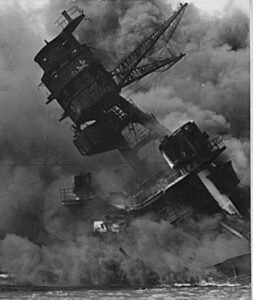
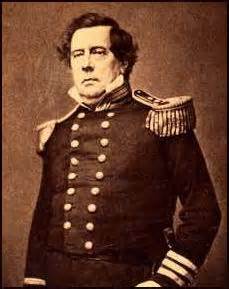 controlled Philippines for potential expansion. Then, came “the straw that broke the camel’s back” for the Americans, and with the threat against the Philippines, the attack of Pearl Harbor was set in motion…all due to the actions taken to protect the Philippines.
controlled Philippines for potential expansion. Then, came “the straw that broke the camel’s back” for the Americans, and with the threat against the Philippines, the attack of Pearl Harbor was set in motion…all due to the actions taken to protect the Philippines.
Had Perry not “opened” Japan, this sequence of events might not have unfolded. This is not to imply Japan would not have modernized, but the trajectory could have been altered. Without the Emperor’s restoration, the Boshin War might not have taken place, possibly preventing the swift military reforms that followed. Of course, all this could be speculation, but the experts think it is fact.

 Israeli Prime Minister Yitzhak Rabin was fatally shot after attending a peace rally in Tel Aviv’s Kings Square, Israel on November 4, 1995. He succumbed to his injuries during surgery at Ichilov Hospital in Tel Aviv. The assassination occurred as Rabin was leaving the rally. The killer was Yigal Amir, who was against the Oslo Accords. The rally, held at Kings of Israel Square (now Rabin Square), supported the peace agreement. As Rabin descended the city hall steps towards his car, Amir fired three shots with a semi-automatic pistol. Two bullets struck Rabin, while the third slightly wounded Yoram Rubin, Rabin’s bodyguard. Rabin was rushed to Ichilov Hospital but passed away curing surgery, due to blood loss and lung damage.
Israeli Prime Minister Yitzhak Rabin was fatally shot after attending a peace rally in Tel Aviv’s Kings Square, Israel on November 4, 1995. He succumbed to his injuries during surgery at Ichilov Hospital in Tel Aviv. The assassination occurred as Rabin was leaving the rally. The killer was Yigal Amir, who was against the Oslo Accords. The rally, held at Kings of Israel Square (now Rabin Square), supported the peace agreement. As Rabin descended the city hall steps towards his car, Amir fired three shots with a semi-automatic pistol. Two bullets struck Rabin, while the third slightly wounded Yoram Rubin, Rabin’s bodyguard. Rabin was rushed to Ichilov Hospital but passed away curing surgery, due to blood loss and lung damage.
Yigal Amir, a 27-year-old Jewish law student, was linked to the far-right Jewish group Eyal. He was arrested by Israeli police at the scene of the shooting and subsequently confessed to the assassination. During his arraignment, he explained that he killed Prime Minister Rabin because the prime minister wanted “to give our country to the Arabs.” Amir was apprehended on the spot and later sentenced to life in prison.
Yitzhak Rabin, who was born in Jerusalem, played a pivotal role in the Arab-Israeli War of 1948 and was the chief-of-staff for Israel’s armed forces during the Six-Day War in 1967. Following his tenure as Israel’s ambassador to the United States, he joined the Labour Party and was elected prime minister in 1974. During his term, he led negotiations resulting in the 1974 ceasefire with Syria and the 1975 military disengagement agreement with Egypt. Rabin resigned from his position in 1977 due to a scandal related to maintaining bank 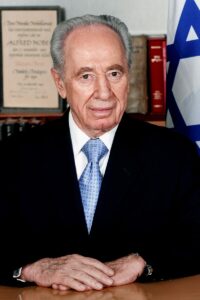
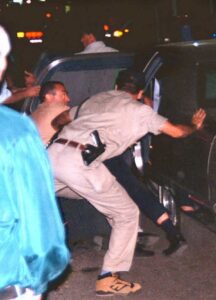 accounts in the United States, contrary to Israeli law. He later served as the defense minister of his country from 1984 to 1990.
accounts in the United States, contrary to Israeli law. He later served as the defense minister of his country from 1984 to 1990.
Then, in 1992, Rabin was the leader of the Labour Party, taking them to an electoral victory. Once again, he became the Prime Minister of Israel. The following year, he signed the landmark Israeli-Palestinian Declaration of Principles alongside Palestinian leader Yasser Arafat, and in 1994, they reached a formal peace agreement. In October of that year, Rabin, Arafat, and Israeli Foreign Minister Shimon Peres were jointly awarded the Nobel Peace Prize. Tragically, Rabin was assassinated in 1995. Shimon Peres, who was serving as Israel’s Foreign Minister at the time, was appointed Acting Prime Minister after an emergency cabinet meeting. It was such an unnecessary attack.
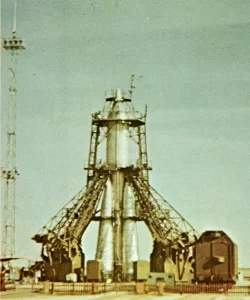
 As in most new ventures, there is risk involved, but sometimes it seems like the risk is too much. When the race to put a man in space began, the fight was on between the United States and the Soviet Union. It was a fight that would eventually be won by the Soviet Union…but at what cost. Putting a man in space was going to be a big deal, but no one knew if space was a safe place, or if humans could even survive in space. It was an unusual dilemma, and it needed an unusual solution.
As in most new ventures, there is risk involved, but sometimes it seems like the risk is too much. When the race to put a man in space began, the fight was on between the United States and the Soviet Union. It was a fight that would eventually be won by the Soviet Union…but at what cost. Putting a man in space was going to be a big deal, but no one knew if space was a safe place, or if humans could even survive in space. It was an unusual dilemma, and it needed an unusual solution.
During the 1950s and 1960s, the Soviet space program utilized dogs for sub-orbital and orbital space flights to assess the viability of human spaceflight. These dogs, including the first animal in space, named Laika, were used to orbit the Earth, and underwent surgical modifications to collect vital data for human survival in space. The program often selected female dogs for their anatomical fit with the spacesuits and mixed-breed dogs for their perceived resilience, but there was just one problem. The dogs didn’t really understand what was going on, and there was no human to calm them down. 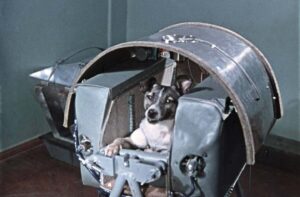
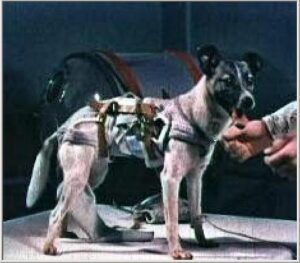
Laika, a part-Siberian Husky, was once a stray wandering the streets of Moscow before being recruited into the Soviet space program. She was used to little human contact. Nevertheless, she got used to it is the space program. While in space, she endured several hours aboard the USSR’s second artificial Earth satellite, sustained by an advanced life-support system. Electrodes connected to her body transmitted vital data to ground scientists about the physiological impacts of spaceflight. I just don’t see how poor Laika could have possibly understood all of this. Unfortunately, Laika died due to overheating and severe emotional stress.
During this period of testing, the Soviet Union conducted missions that included at least 57 dogs as passengers. Several dogs were sent on multiple flights. The majority survived, with most fatalities resulting from technical 
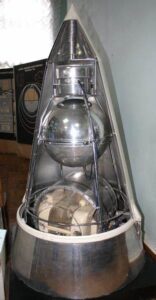 failures within the test parameters. Laika was a notable exception, as her death was anticipated during the Sputnik 2 mission orbiting Earth on November 3, 1957.
failures within the test parameters. Laika was a notable exception, as her death was anticipated during the Sputnik 2 mission orbiting Earth on November 3, 1957.
In preparation for the first manned Soviet space mission, over a dozen Russian dogs were sent into space, and unfortunately, at least five died during the flight. I think that if it were me, I would be pretty apprehensive about going into space after five dogs had died trying to do so. Nevertheless, on April 12, 1961, Yuri Gagarin, a Soviet cosmonaut, made history as the first person ever to journey into space. Traveling aboard Vostok 1, he completed one orbit around Earth before safely returning to the USSR. While it was a man that made history as the first person in space, it was a dog name Laika that actually paved the way…giving her life in the effort.
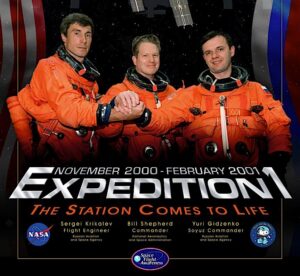
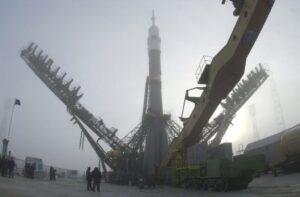 I think most people who followed the building of the International Spece Station were excited about this new venture in the history of space travel. The idea of men and women living and working up there for extended periods of time was amazing…especially when you considered the fact that they would be from multiple countries. Finally, on November 2, 2000, the first residential crew arrived to basically take possession of the International Space Station. The arrival of Expedition 1 heralded a new era of international cooperation in space and the start of the longest continuous human habitation in low Earth orbit. The fact that it is still going on to this day further adds to the enormity of the accomplishment.
I think most people who followed the building of the International Spece Station were excited about this new venture in the history of space travel. The idea of men and women living and working up there for extended periods of time was amazing…especially when you considered the fact that they would be from multiple countries. Finally, on November 2, 2000, the first residential crew arrived to basically take possession of the International Space Station. The arrival of Expedition 1 heralded a new era of international cooperation in space and the start of the longest continuous human habitation in low Earth orbit. The fact that it is still going on to this day further adds to the enormity of the accomplishment.
The space agencies of the United States, Russia, Canada, Japan, and Europe agreed in 1998 to collaborate on the ISS, and its initial components were launched into orbit that year. That in and of itself is amazing. For all these nations to agree to work together to benefit mankind is awesome. Five space shuttle flights and two unmanned Russian flights delivered many core components and partially assembled the station. Yuri Gidzenko 
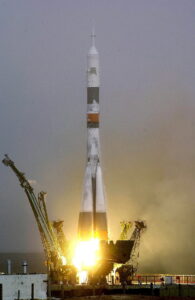 and Sergei Krikalev of Russia, along with NASA’s Bill Shepherd, were the chosen crew for Expedition 1.
and Sergei Krikalev of Russia, along with NASA’s Bill Shepherd, were the chosen crew for Expedition 1.
The trio reached the ISS aboard a Russian Soyuz rocket launched from Kazakhstan. Expedition 1’s tasks primarily involved constructing and installing various components and activating others, a process that proved challenging at times. In one process, for instance, the crew spent over a day activating one of the station’s food warmers. That was probably motivated by hunger!! Of course, I’m sure they had temporary rations available…just in case. During their mission, they received visits and supplies from two unmanned Russian rockets and three space shuttle missions, one of which delivered the photovoltaic arrays, the giant solar panels that provide most of the station’s power. I suppose that was similar to having house guests. Shepherd, Gidzenko, and Krikalev were the first to adapt to long-term life in low orbit, orbiting Earth approximately 15.5 times a day and exercising at least two hours daily to counteract muscle atrophy due to low gravity. You wouldn’t think that humans could lose muscle mass in space (or at least, I didn’t), but like with any other muscle strength, it really is a “use it or lose it” situation.
All in all, the three men were in space for a little over three months. It was a momentous event. Then, on March 10, the space shuttle Discovery brought three new residents to replace the Expedition 1 crew. Shepherd, Gidzenko, and Krikalev returned to Earth at the Kennedy Space Center on March 21. Since then, humans have 
 continuously lived on the ISS, with plans to extend the mission until at least 2030. To date, 236 individuals from 18 countries have visited the station, and several new modules have been added, many aimed at conducting biological research. Like Niel Armstrong said when he stepped on the surface of the moon in 1969, “That’s one small step for a man, one giant leap for mankind.” Yes, it was…and so was this.
continuously lived on the ISS, with plans to extend the mission until at least 2030. To date, 236 individuals from 18 countries have visited the station, and several new modules have been added, many aimed at conducting biological research. Like Niel Armstrong said when he stepped on the surface of the moon in 1969, “That’s one small step for a man, one giant leap for mankind.” Yes, it was…and so was this.
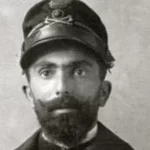
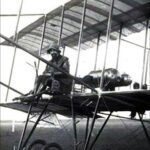 In what must be considered very unconventional, at least these days, Lieutenant Giulio Gavotti of the Italian army effectively dropped the first aerial bombs on November 1, 1911. He took four grenades (“Cipelli”) in a leather pouch, each of a size of grapefruit and weighing about four pounds. The bombing took place during a flight over Libya, when Gavotti threw three grenades from his aircraft onto a Turkish encampment. These days we wouldn’t have even considered that to be a bombing run, but…well, what else could it be called. Planes were very new, and bombing runs unheard of. It was just eight years after the Wright brothers achieved the world’s first flight in America, and the Kingdom of Italy dispatched several aircraft to Libya, aiming to seize territory in their conflict with the disintegrating Ottoman Empire. Lieutenant Giulio Gavotti boarded one of the Italian army’s wood-and-canvas “Taube” airplanes, carrying four grenades. It was a bold move, but then I’m quite sure that there were no anti-aircraft guns to worry about, and no fighter planes to run from either.
In what must be considered very unconventional, at least these days, Lieutenant Giulio Gavotti of the Italian army effectively dropped the first aerial bombs on November 1, 1911. He took four grenades (“Cipelli”) in a leather pouch, each of a size of grapefruit and weighing about four pounds. The bombing took place during a flight over Libya, when Gavotti threw three grenades from his aircraft onto a Turkish encampment. These days we wouldn’t have even considered that to be a bombing run, but…well, what else could it be called. Planes were very new, and bombing runs unheard of. It was just eight years after the Wright brothers achieved the world’s first flight in America, and the Kingdom of Italy dispatched several aircraft to Libya, aiming to seize territory in their conflict with the disintegrating Ottoman Empire. Lieutenant Giulio Gavotti boarded one of the Italian army’s wood-and-canvas “Taube” airplanes, carrying four grenades. It was a bold move, but then I’m quite sure that there were no anti-aircraft guns to worry about, and no fighter planes to run from either.
Gavotti headed towards the Turkish oasis encampment of Ain Zara, east of what is now Tripoli, and dropped 
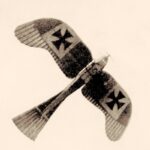 three of his four grenades. This event marked the first instance of live ordnance being released from an aircraft under enemy fire. The Ottoman Empire expressed indignation, alleging that the bombs had hit a field hospital and resulted in civilian casualties. Subsequent investigations by the governments of Great Britain, France, Germany, Russia, and the United States concluded that the bombing likely resulted in minimal, if any, casualties since the grenades either failed to detonate or landed in uninhabited desert areas. Nevertheless, the Ottoman Empire was looking to garner sympathy for the act, and in reality, it was the beginning of many civilian casualties that could later be attributed to the bombings of war.
three of his four grenades. This event marked the first instance of live ordnance being released from an aircraft under enemy fire. The Ottoman Empire expressed indignation, alleging that the bombs had hit a field hospital and resulted in civilian casualties. Subsequent investigations by the governments of Great Britain, France, Germany, Russia, and the United States concluded that the bombing likely resulted in minimal, if any, casualties since the grenades either failed to detonate or landed in uninhabited desert areas. Nevertheless, the Ottoman Empire was looking to garner sympathy for the act, and in reality, it was the beginning of many civilian casualties that could later be attributed to the bombings of war.
While that first “aerial bombing” brought with it limited collateral damage, it signified the beginning of a new era in aerial warfare, nevertheless. A Berlin newspaper observed that although airplanes and airships were not 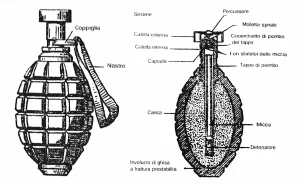 practical for offensive purposes, they proved indispensable for reconnaissance, stating, “The Italian Command is always, thanks to aircraft, informed of every displacement of Turkish troops, and knows the exact positions of them.” In subsequent years, German Zeppelin airships during World War I carried out bombings over cities throughout Europe, from Antwerp to Paris to London, heralding a time when aircraft would target not just military personnel but also civilian populations. While the Zeppelin bombings were much more effective, the credit for the first aerial bombing goes to the Italians, and Lieutenant Giulio Gavotti. I wonder how shocked the people on the ground were when those grenades dropped.
practical for offensive purposes, they proved indispensable for reconnaissance, stating, “The Italian Command is always, thanks to aircraft, informed of every displacement of Turkish troops, and knows the exact positions of them.” In subsequent years, German Zeppelin airships during World War I carried out bombings over cities throughout Europe, from Antwerp to Paris to London, heralding a time when aircraft would target not just military personnel but also civilian populations. While the Zeppelin bombings were much more effective, the credit for the first aerial bombing goes to the Italians, and Lieutenant Giulio Gavotti. I wonder how shocked the people on the ground were when those grenades dropped.

 Halloween in the United States traces its origins to the customs of European immigrants, especially those from Ireland and Scotland. The term “Halloween” is derived from “All Hallow’s Eve,” which is the night before the Christian sacred observances of All Hallow’s Day on November 1st and All Souls’ Day on November 2nd. Similar to other significant Christian dates, it included vigils starting the previous evening. This trio of days is known as Allhallowtide, a time when Christians pay homage to all saints and offer prayers for the souls that have passed away recently. People pray for the dead for several reasons…among them, hope for salvation (it was thought that prayers express hope that God will free the deceased from sin and prepare a place in heaven), coping with bereavement (it was thought that praying for the dead helps ordinary Christians deal with loss), charity and atonement (it was thought that we can do acts of charity for the departed to help atone for their sins)…or so they believe. I don’t personally believe that our prayers for the dead will do these things, but that was the tradition.
Halloween in the United States traces its origins to the customs of European immigrants, especially those from Ireland and Scotland. The term “Halloween” is derived from “All Hallow’s Eve,” which is the night before the Christian sacred observances of All Hallow’s Day on November 1st and All Souls’ Day on November 2nd. Similar to other significant Christian dates, it included vigils starting the previous evening. This trio of days is known as Allhallowtide, a time when Christians pay homage to all saints and offer prayers for the souls that have passed away recently. People pray for the dead for several reasons…among them, hope for salvation (it was thought that prayers express hope that God will free the deceased from sin and prepare a place in heaven), coping with bereavement (it was thought that praying for the dead helps ordinary Christians deal with loss), charity and atonement (it was thought that we can do acts of charity for the departed to help atone for their sins)…or so they believe. I don’t personally believe that our prayers for the dead will do these things, but that was the tradition.
Of course, there are other traditions that have come into being concerning Halloween. Some traditions take on  “the darker side” and some keep things purely secular, saying that Halloween is just a day of kids costumes and free candy. For the kids, it seems that while the costumes are cool, having a huge sack of candy, that will supposedly be under their complete control, is beyond the coolest of their imaginations. Of course, most parents won’t allow the child to have complete control of so much candy, but hey, a kid can dream.
“the darker side” and some keep things purely secular, saying that Halloween is just a day of kids costumes and free candy. For the kids, it seems that while the costumes are cool, having a huge sack of candy, that will supposedly be under their complete control, is beyond the coolest of their imaginations. Of course, most parents won’t allow the child to have complete control of so much candy, but hey, a kid can dream.
In colonial America, Halloween was not celebrated as it is today. The New England Puritans strongly opposed this holiday, along with many others. Some historians note that Anglican colonists in the southern United States and Catholic colonists in Maryland observed All Hallow’s Eve in their church calendars. Nevertheless, it did not become a significant holiday until the mass immigration of the Irish and Scots in the 19th century. The Irish and Scottish immigrants introduced customs like carving turnips, creating jack-o-lanterns, and igniting bonfires. These traditions merged with those of other communities in America. Initially, pumpkin carving in the United States was linked to harvest time, but eventually it became a Halloween staple. In Cajun regions, influenced by French culture, night masses were held, blessed candles were placed on graves, and families often spent the entire night beside their loved ones’ resting places.
Personally, I like the cute little costumes the little kids wear, and how excited they are when someone gives 
 them candy. I saw a commercial in which a boy tells his dad what he loves about Halloween…that people give him KitKats for free. It doesn’t faze the boy at all, when his dad tells him that he’s 8 and therefore all his KitKats are free. The boy isn’t concerned about that, he just keeps on talking about why he loves the day. However you celebrate, have a safe and happy Halloween.
them candy. I saw a commercial in which a boy tells his dad what he loves about Halloween…that people give him KitKats for free. It doesn’t faze the boy at all, when his dad tells him that he’s 8 and therefore all his KitKats are free. The boy isn’t concerned about that, he just keeps on talking about why he loves the day. However you celebrate, have a safe and happy Halloween.
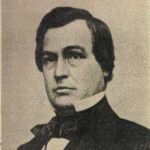
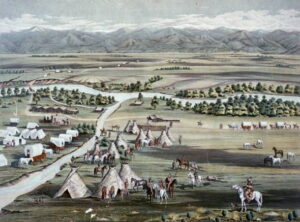 Have you ever wondered how a city got its start and its name? For one small frontier town in Kansas Territory, United States, it all began on October 29, 1858, when the first store opened. The store was probably situated near the confluence of the South Platte River and Cherry Creek, the present-day location of central Denver. This junction of rivers also served as a cultural crossroads between the Southern Arapaho and white settlers pursuing gold rumors. One short month later the small frontier town would take on the name of Denver in a shameless ploy to curry favor with Kansas Territorial Governor James W Denver.
Have you ever wondered how a city got its start and its name? For one small frontier town in Kansas Territory, United States, it all began on October 29, 1858, when the first store opened. The store was probably situated near the confluence of the South Platte River and Cherry Creek, the present-day location of central Denver. This junction of rivers also served as a cultural crossroads between the Southern Arapaho and white settlers pursuing gold rumors. One short month later the small frontier town would take on the name of Denver in a shameless ploy to curry favor with Kansas Territorial Governor James W Denver.
Denver was conceived by a town promoter and real estate salesman from Kansas named William H Larimer Jr, and that first store was established to cater to miners extracting placer gold found a year earlier at the confluence of Cherry Creek and the South Platte River. Many small frontier towns have simply become ghost towns now, but that was not to be the case for Denver. By 1859, the area had seen an influx of tens of thousands of gold seekers. Still, it’s existence would not be without struggle. The placer deposits were  diminishing, prompting most miners to either return home or venture westward into the mountains in pursuit of the more abundant veins.
diminishing, prompting most miners to either return home or venture westward into the mountains in pursuit of the more abundant veins.
By 1860, Larimer’s fledgling town was on the brink of failure. Despite its central location for servicing mining camps along the Rocky Mountain Front Range, Denver lacked the necessary rail and water transportation routes for affordable goods delivery. The transcontinental Union Pacific Railroad, launched in 1869, initially bypassed Denver. However, in 1870, Denver started to break free from its geographical isolation when the Kansas Pacific Railroad arrived from the east and the 105-mile Denver Pacific Railway connected Denver to the Union Pacific line at Cheyenne. Subsequent rail lines linked Denver with the flourishing mining areas in the Rockies, and by the mid-1870s, Denver was prospering as a railroad hub and a focal point of the western mining industry. The railroads had saved the town.
By 1890, Denver’s population exceeded 106,000, ranking it as the 26th largest urban area in the United States and giving it the moniker “Queen City of the Plains.” The Silver Panic of 1893 abruptly halted the economic 
 boom, which was only partially revived by the 1894 gold discoveries at Cripple Creek. So, there was still some concern about the viability of the city. The increasing importance of farming and ranching helped stabilize the city’s economy by reducing reliance on mining and quite possibly saving the city. Still, the cyclical nature of economic booms and busts continues as a dominant force in Denver, as well as in many other western cities, for much of the 20th century.
boom, which was only partially revived by the 1894 gold discoveries at Cripple Creek. So, there was still some concern about the viability of the city. The increasing importance of farming and ranching helped stabilize the city’s economy by reducing reliance on mining and quite possibly saving the city. Still, the cyclical nature of economic booms and busts continues as a dominant force in Denver, as well as in many other western cities, for much of the 20th century.
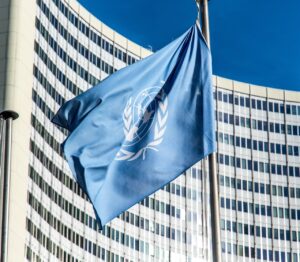
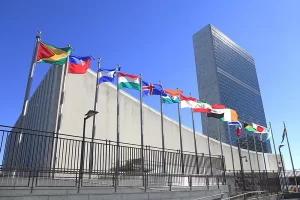 On October 24, 1945, the United Nations Charter, adopted and signed on June 26, 1945, came into effect. The United Nations (UN) emerged from a “perceived” need for a mechanism superior to the League of Nations in arbitrating international conflicts and negotiating peace. The escalating Second World War prompted the United States, Britain, and the Soviet Union to draft the initial UN Declaration, which 26 nations signed in January 1942 as an official stance against the Axis Powers of Germany, Italy, and Japan. It all seemed like a good idea, and perhaps was drafted with good intentions, but it is my opinion that the UN has failed miserably to accomplish any of the goals it set out to achieve.
On October 24, 1945, the United Nations Charter, adopted and signed on June 26, 1945, came into effect. The United Nations (UN) emerged from a “perceived” need for a mechanism superior to the League of Nations in arbitrating international conflicts and negotiating peace. The escalating Second World War prompted the United States, Britain, and the Soviet Union to draft the initial UN Declaration, which 26 nations signed in January 1942 as an official stance against the Axis Powers of Germany, Italy, and Japan. It all seemed like a good idea, and perhaps was drafted with good intentions, but it is my opinion that the UN has failed miserably to accomplish any of the goals it set out to achieve.
The foundational principles of the UN Charter were initially shaped during the San Francisco Conference, which began on April 25, 1945. This conference established the framework for a new international organization intended to “save succeeding generations from the scourge of war, to reaffirm faith in fundamental human rights, to establish conditions under which justice and respect for the obligations arising from treaties and other sources of international law can be maintained, and to promote social progress and better standards of life in larger freedom.” The Charter further outlined two additional vital goals. They were to maintain the principles of equal rights and self-determination for all peoples…initially intended to safeguard smaller nations at risk of being overtaken by the larger Communist powers emerging after the war, and to promote international collaboration to tackle worldwide economic, social, cultural, and humanitarian issues.
Following the war’s end, the responsibility of negotiating and maintaining peace was assigned to the newly established UN Security Council, which included the United States, Great Britain, France, the Soviet Union, and China. Each member possessed veto power. Winston Churchill implored the United Nations to employ its charter to promote a new, united Europe…a unity characterized by its opposition to communist expansion in both the East and the West. Yet, given the composition of the Security Council, achieving this proved more challenging than anticipated. I suppose that the distain felt by many people, for the United Nations, could have arisen from an impossible task, but more likely it came from flawed people who placed their own agenda ahead of the real needs of the people.
The United Nations is subject to criticism for a variety of reasons, including its policies, ideology, equality of representation, administrative practices, enforcement of decisions, and perceived ideological biases. Critics often cite a lack of success within the organization, noting failures in both preventative measures and in de-escalating conflicts ranging from social disputes to full-blown wars. Additional criticisms involve accusations of antisemitism, appeasement, collusion, promotion of globalism, inaction, and the exertion of undue influence by 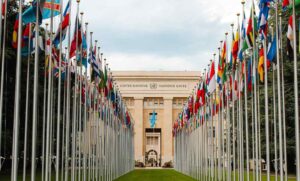
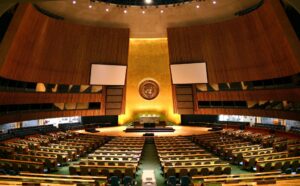 powerful nations within the General Assembly, as well as corruption and misallocation of resources. In my opinion, and that of many other people, that the UN should be dissolved, or at the very least, that the United States should withdraw and expel the United Nations from this nation. While some may disagree, this is my viewpoint.
powerful nations within the General Assembly, as well as corruption and misallocation of resources. In my opinion, and that of many other people, that the UN should be dissolved, or at the very least, that the United States should withdraw and expel the United Nations from this nation. While some may disagree, this is my viewpoint.
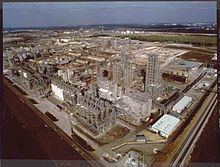 There is really no good reason to ever compromise on the safety procedures in a plant. People often think that it’s not that important to follow every safety procedure, every time…until something goes wrong. Then, they know the purpose of the safety procedures. On October 23, 1989, 23 people lost their lives in a series of explosions sparked by an ethylene leak at a factory in Pasadena, Texas. It was determined that the blasts, which took place at a Phillips Petroleum Company plant, were caused by inadequate safety procedures.
There is really no good reason to ever compromise on the safety procedures in a plant. People often think that it’s not that important to follow every safety procedure, every time…until something goes wrong. Then, they know the purpose of the safety procedures. On October 23, 1989, 23 people lost their lives in a series of explosions sparked by an ethylene leak at a factory in Pasadena, Texas. It was determined that the blasts, which took place at a Phillips Petroleum Company plant, were caused by inadequate safety procedures.
The Phillips 66 Chemical Complex in Pasadena houses a polyethylene reactor that synthesizes essential chemical compounds for plastic production. This facility generates millions of pounds of plastic each day, which are then utilized in manufacturing toys and various containers. Always looking to better their bottom line, Phillips outsourced a significant portion of the plant’s essential maintenance work to reduce expenses. Fish Engineering and Construction, the main subcontractor, already had a less-than-exemplary reputation before the disaster on 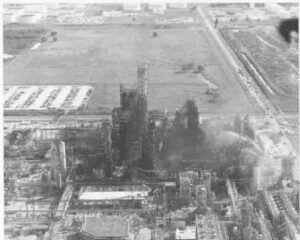 October 23rd. Previously, in August, a Fish worker-initiated maintenance on gas piping without isolating it, leading to the release of flammable solvents and gas into a work area. The resulting ignition caused the death of one employee and injuries to four others.
October 23rd. Previously, in August, a Fish worker-initiated maintenance on gas piping without isolating it, leading to the release of flammable solvents and gas into a work area. The resulting ignition caused the death of one employee and injuries to four others.
Then, at 1:05pm, on October 23rd, during maintenance work on the plant’s polyethylene reactor, issues emerged once more. A valve was improperly secured, leading to the release of 85,000 pounds of highly flammable ethylene-isobutane gas into the plant around 1pm. The absence of detectors or warning systems failed to alert anyone of the looming catastrophe. In under two minutes, the vast gas cloud exploded with the force equivalent to two-and-a-half tons of dynamite. The blast was heard for miles in every direction, and the ensuing fireball could be seen from at least 15 miles away. At Phillips, twenty-three workers lost their lives and an additional 130 sustained serious injuries when the initial explosion triggered a series of subsequent explosions.
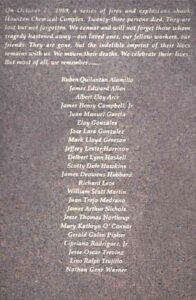 The initial emergency response came from the Phillips Petroleum Company’s fire brigade, who were quickly supported by the Channel Industries Mutual Aid (CIMA) team. Collaborating governmental entities included the Texas Air Control Board, Harris County Pollution Control, the Federal Aviation Administration (FAA), the US Coast Guard, the Occupational Safety and Health Administration (OSHA), and the US Environmental Protection Agency (EPA).
The initial emergency response came from the Phillips Petroleum Company’s fire brigade, who were quickly supported by the Channel Industries Mutual Aid (CIMA) team. Collaborating governmental entities included the Texas Air Control Board, Harris County Pollution Control, the Federal Aviation Administration (FAA), the US Coast Guard, the Occupational Safety and Health Administration (OSHA), and the US Environmental Protection Agency (EPA).
Investigation of the disaster revealed that despite the Occupational Safety and Health Administration (OSHA) citing Phillips for multiple serious safety violations in the past, a comprehensive inspection of the plant had not been conducted since 1975. Testimonies also uncovered that the plant was susceptible to disaster due to insufficient safety measures during maintenance. Nevertheless, even knowing all that, Phillips and its managers were never required to face criminal charges.

